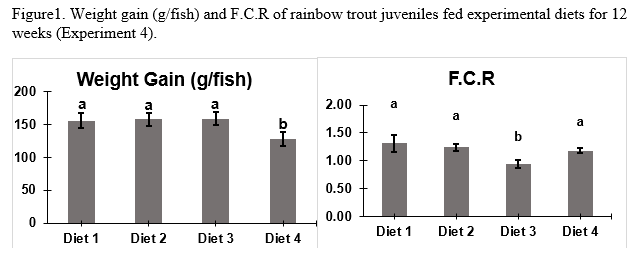DEVELOPMENT OF IMPROVED COMMERCIAL FEEDS FOR RAINBOW TROUT Oncorhynchus mykiss. A CASE STUDY ON BALANCING COST, PERFORMANCE, AND SUSTAINABILITY.
The state of static production volume and highly volatile market conditions of rainbow trout (Oncorhynchus mykiss) production in the US leaves farmers with few options for increasing the profitability of their businesses. It is well established that feed costs are the largest single variable cost, lowering trout feed costs as profits shrink is an industry priority. Four experiments were conducted at the Hagerman Fish Culture Experiment Station evaluating 16 commercially-produced trout feed formulas with the objective of optimizing the feed cost - fish performance balance. The primary objectives of experiments 1-4 were to measure the effects of feeding alternative formulas to rainbow trout on intestinal morphology and innate immunity, fecal turgidity, followed by performance during the juvenile lifestage, and growout lifestage, respectively.
Experiment 1 resulted in no statistical differences in all measurements except for higher oxidative radical production in fish fed Diet 4. Experiment 2 resulted in statistical differences in weight gain and FCR; and numerical differences in fecal durability. Experiment three resulted in significantly improved nutrient digestibility in Diet 4 while maintain statistically similar fish performance and fecal particle size distribution as Diet 1. Although the growth performance, feed utilization, fillet yield and whole-body composition results were not statistically different (P>0.05), practical numerical differences were observed in Experiment 4. Taken together, these results suggest that based on growth and feed utilization, fish fed diet groups 1 and 3 tended to perform better than fish fed the diet group 4.
